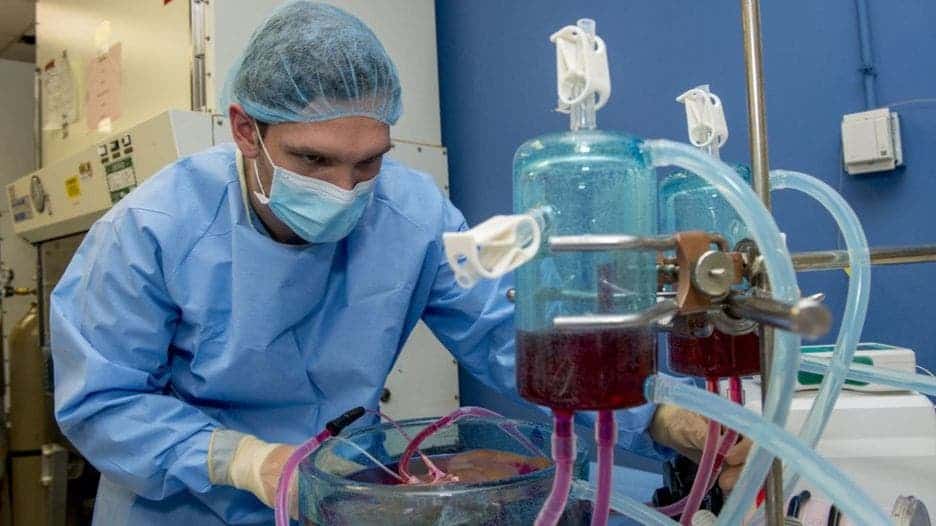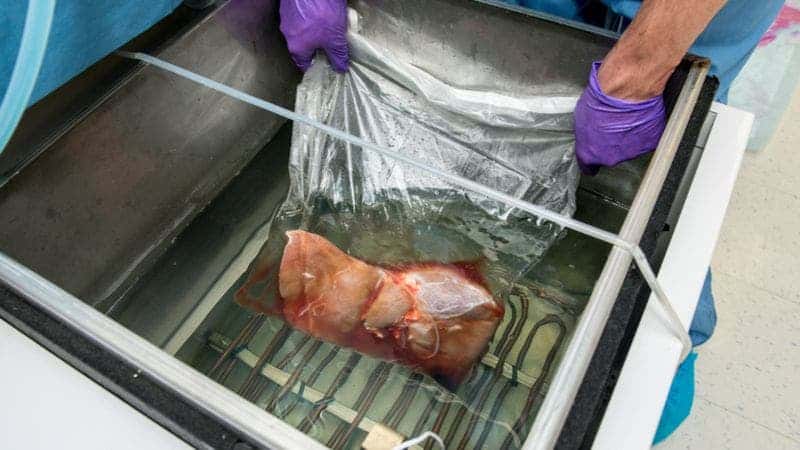After organs are harvested following a donor’s death, there’s a very short time window in which the transplant can be made. Some organs can be preserved for longer than others, and livers are some of the most short-lived ones. In groundbreaking research, scientists demonstrated a new method that supercools livers, preserving them for 27 hours — that’s nearly a day longer than livers typically survive outside the body.

On average, 20 people die each day waiting for an organ in the United States and a new name is added to the national transplant waiting list every 10 minutes. Part of the problem lies in an insufficient supply of compatible organs, something which scientists hope to one day solve by growing organs in the lab from a patient’s own cells. This kind of technology, however, could be decades away from widescale adoption.
In the meantime, doctors are scrambling to improve the availability of organs they now have access to in order to make up for this shortage.
With the expansion of transplantation as a clinical therapy from the 1980s onwards, methods of multiple organ procurement and preservation were required. Since then, researchers have developed all sorts of techniques and strategies to prepare organs before transplant.
Typically organs are preserved in a cold solution. Cooling is necessary to reduce cellular metabolism and the requirements for oxygen to prevent tissue injury. One can’t simply freeze an organ because that would form ice crystals that destroy cells.
In a new study, Korkut Uygun and colleagues at the Harvard Medical School and the Massachusetts General Hospital, used a technique called supercooling which lowers the temperature of water to -6°C (21°F) without freezing it.
Previously, the team demonstrated that this method works on rat livers. Human livers, however, are an entirely different affair since they can be 200 times larger.

Writing in the journal Nature Biotechnology, the researchers explain how they used a solution of protective agents, including an ingredient present in antifreeze, that prevented human liver cells from freezing despite subzero temperatures.
Experiments on discarded human livers showed they could be kept for 27 hours, rather than the typical nine hours when the organs are stored on ice — this means the procedure could triple the survivability of livers awaiting a transplant. Healthier organs could be preserved even longer — in the order of days, the researchers say.
“We show that human livers can be stored at –4 °C with supercooling followed by subnormothermic machine perfusion, effectively extending the ex vivo life of the organ by 27 h. We show that viability of livers before and after supercooling is unchanged, and that after supercooling livers can withstand the stress of simulated transplantation by ex vivo normothermic reperfusion with blood,” the researchers wrote.
Subsequent tests showed that oxygen use, bile production, and lactate metabolism functioned as expected after the cooled livers were brought up to normal temperature.
Although the researchers have yet to implant a liver preserved in this way into a human patient, they are confident that the process will not affect the organ’s health.
About 30% of all US deaths could be forestalled by an organ transplant. The new study could thus save countless lives by keeping livers viable long enough for them to reach those most in need.


